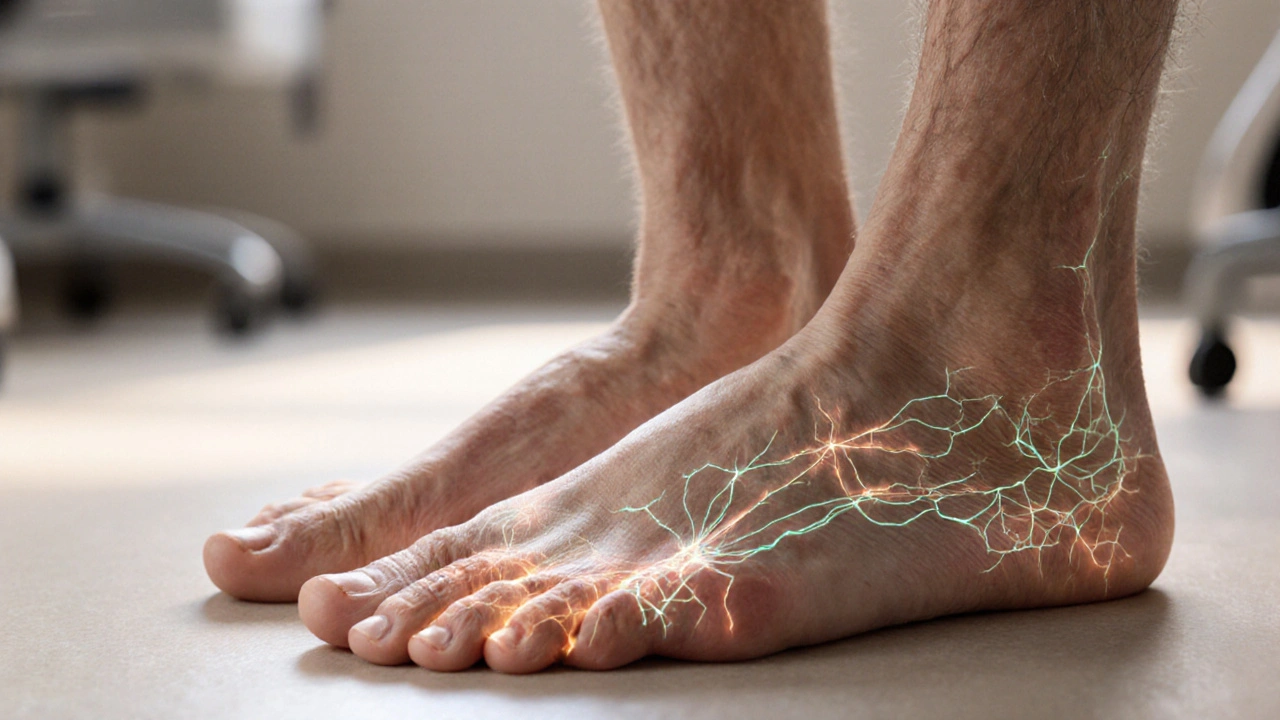Learn how diabetic peripheral neuropathy impairs balance, boosts fall risk, and what steps-like tight glucose control, targeted exercise, and orthotics-can keep you steady.
Balance Issues: Causes, Symptoms, and What to Watch For
When dealing with Balance Issues, the sensation of being unsteady or unable to stay upright. Also known as unsteadiness, it often stems from the brain, inner ear, or side‑effects of medicines. A common companion is Dizziness, a vague feeling of light‑headedness that can precede a fall, and both can quickly turn everyday tasks into challenges. Understanding how these sensations connect helps you spot the root cause before it escalates.
Key Players That Influence Your Stability
Another frequent offender is Vertigo, a spinning sensation that tricks the brain into thinking you’re moving when you’re not. Unlike general dizziness, vertigo usually points to inner‑ear disorders such as benign paroxysmal positional vertigo (BPPV) or inflammation of the vestibular nerve. Those conditions directly affect the balance organ, making head movements risky. Balance issues also have a hidden link to Medication Side Effects, adverse reactions from drugs that can impair coordination or affect blood pressure. For example, NSAIDs like Mobic (Meloxicam) or pain relievers such as Tylenol (Acetaminophen) occasionally cause dizziness, especially when combined with blood‑pressure meds like Propranolol. Recognizing this triple connection—inner‑ear health, medication impact, and brain processing—lets you narrow down why your balance feels off.
Beyond drugs, chronic conditions such as diabetes (managed with Metformin) or hypertension can subtly alter nerve signaling, leading to unsteady gait. Low blood sugar or sudden drops in blood pressure after standing up—known as orthostatic hypotension—can produce a sudden wave of dizziness that mimics true balance loss. When these systemic issues combine with an inner‑ear problem, the brain receives mixed messages, amplifying the feeling of instability. By mapping out each factor—inner‑ear disorders, medication side effects, and systemic health—you get a clearer picture of what’s behind the wobble and can target each piece with lifestyle tweaks, medication reviews, or specialist care.
Below you’ll find a curated collection of articles that break down specific drugs, health conditions, and practical tips related to the topics we just covered. Whether you’re looking to compare pain relievers, understand how diabetes meds affect your equilibrium, or learn simple exercises to steady your gait, the posts ahead provide concrete information you can act on right now.

